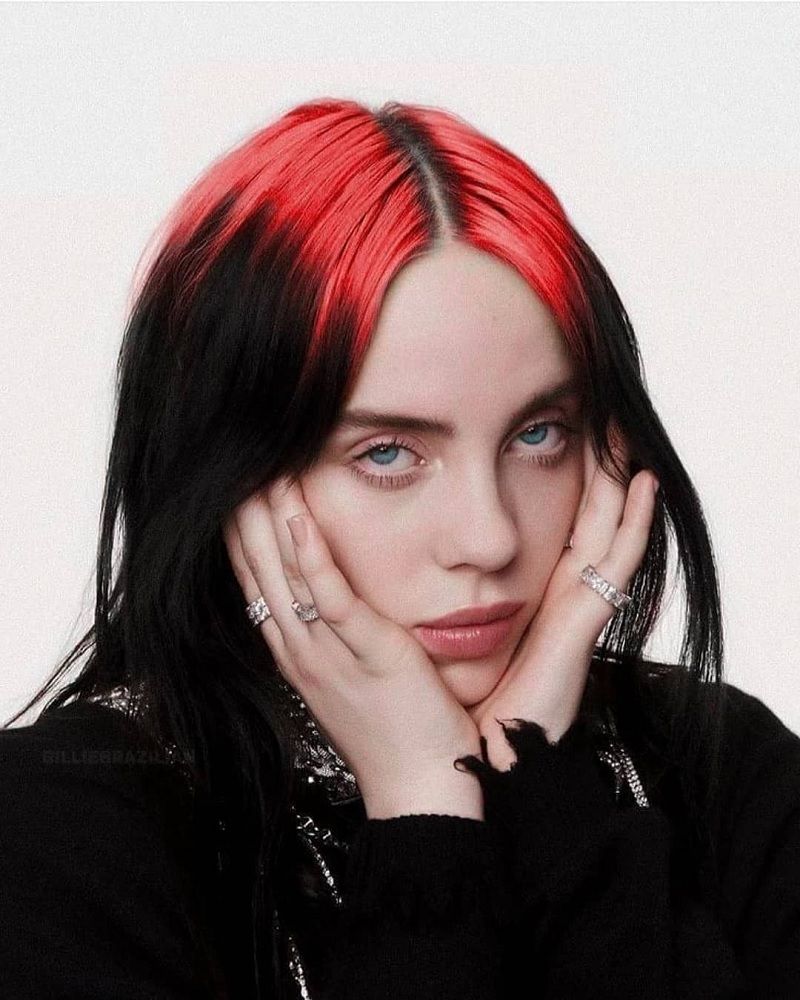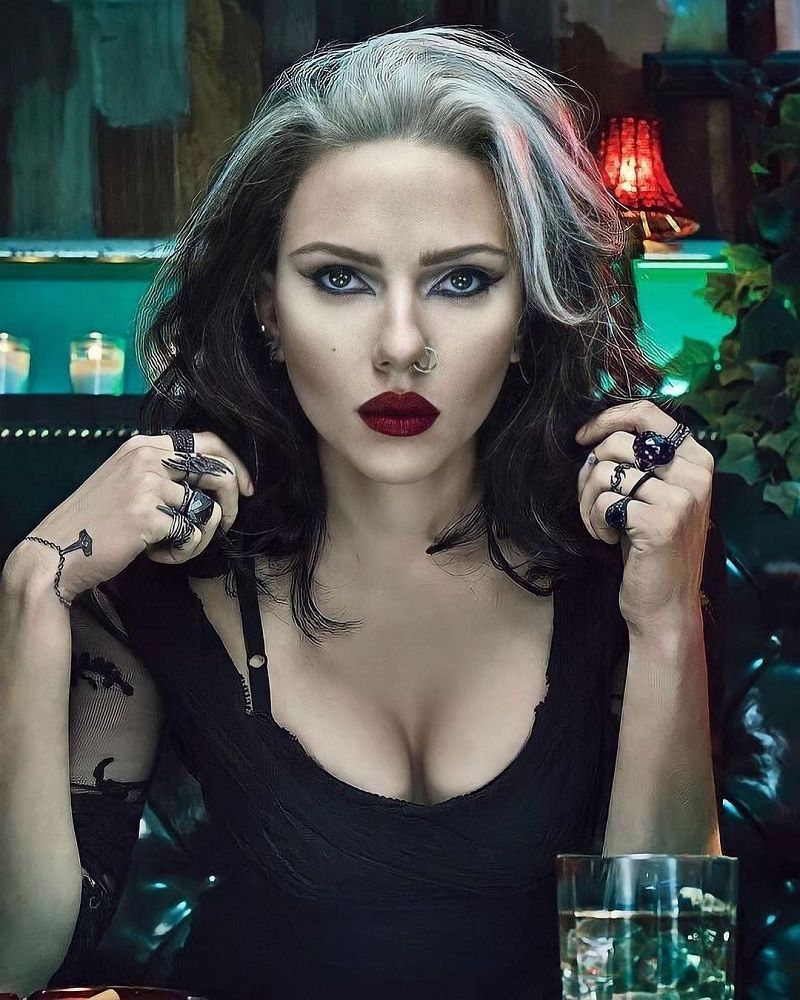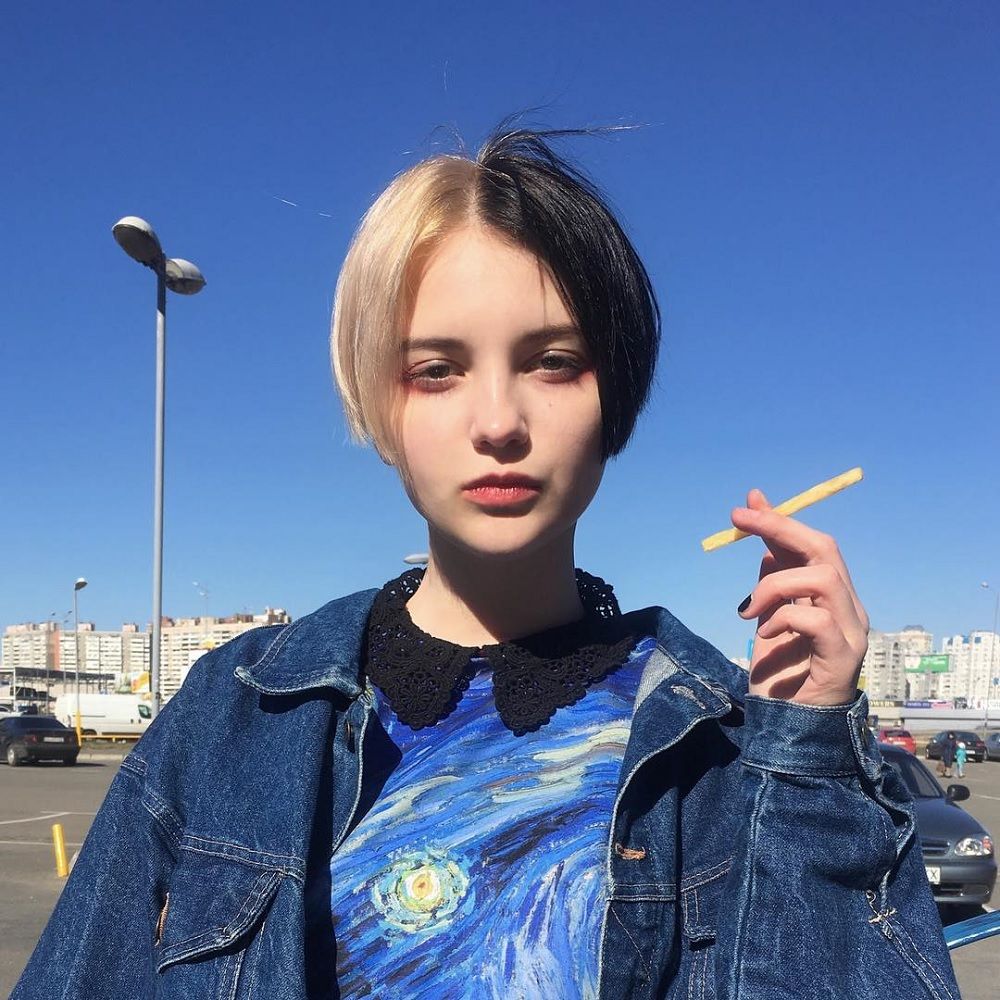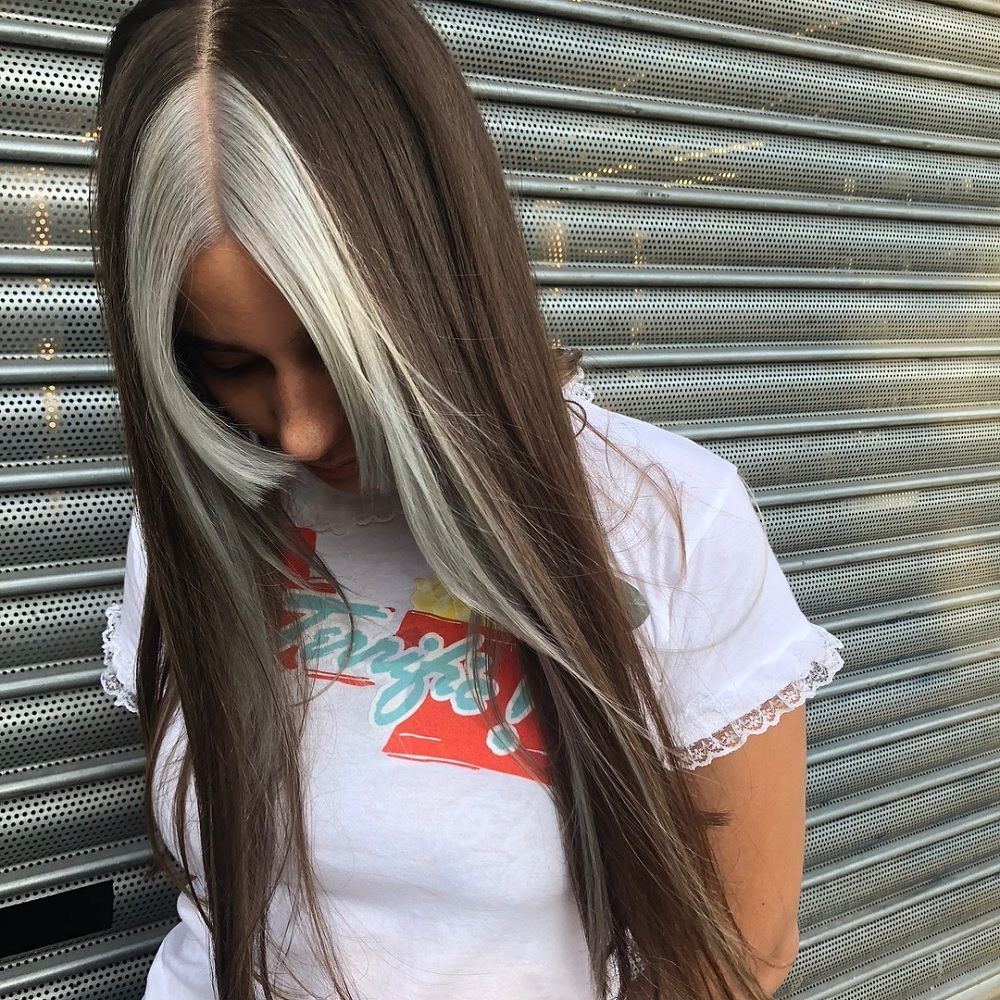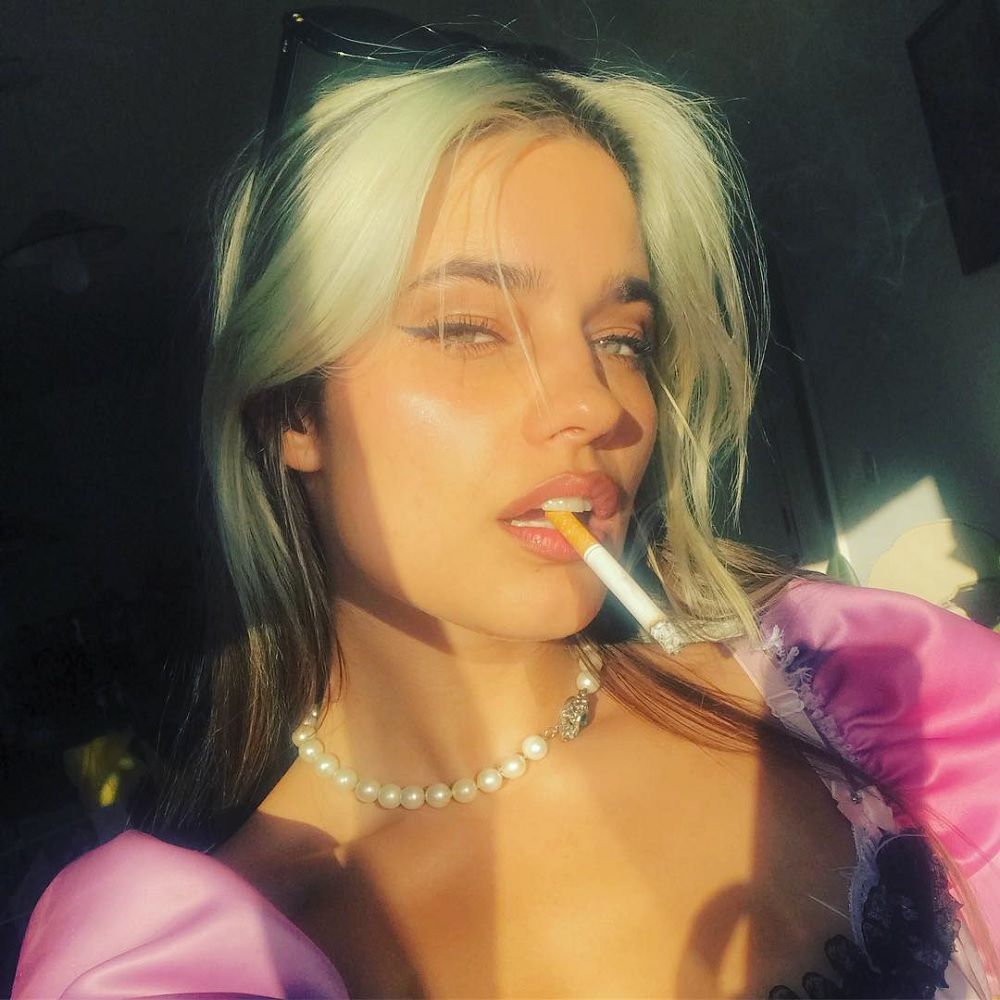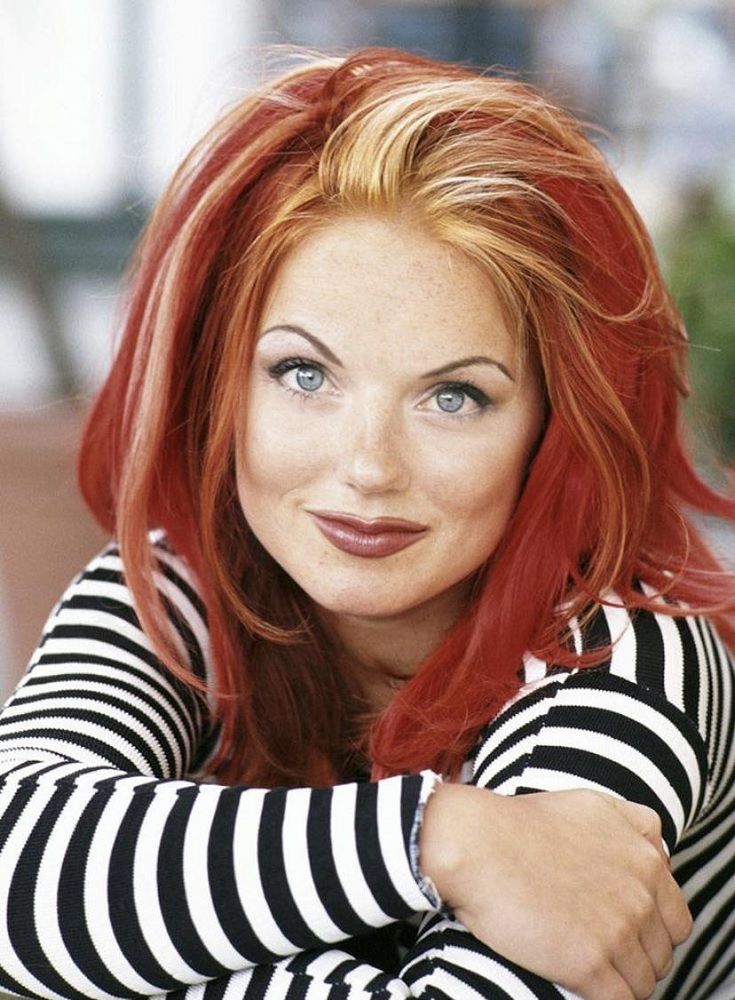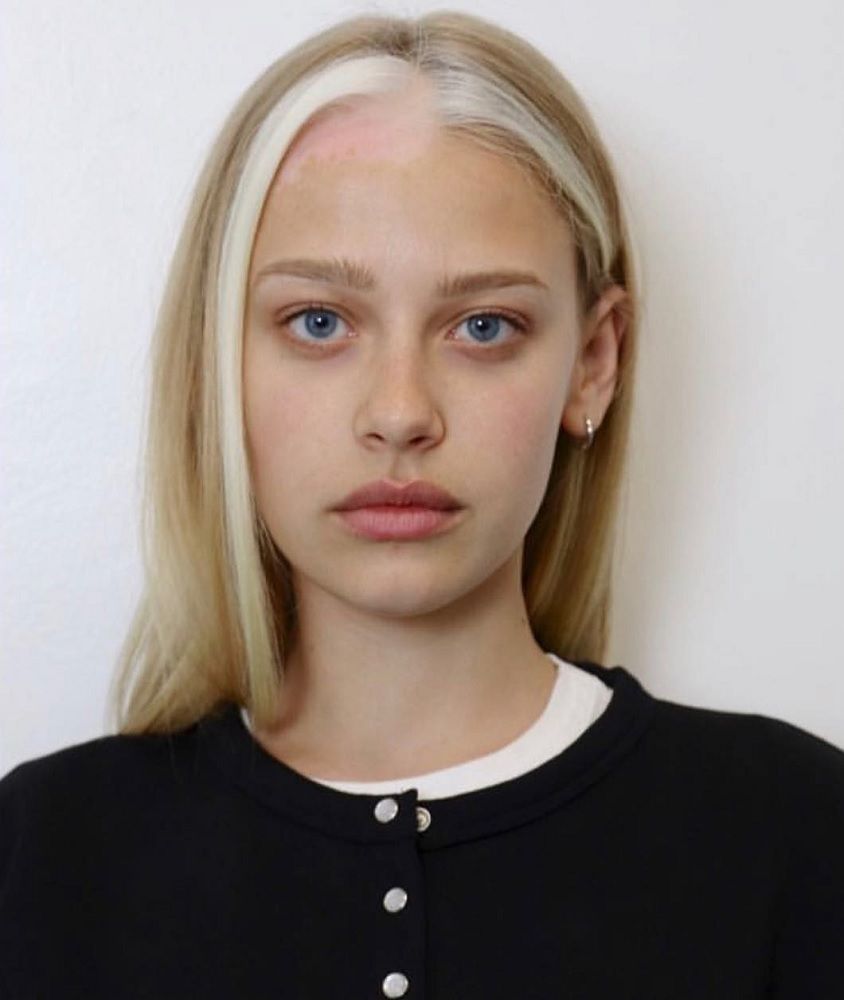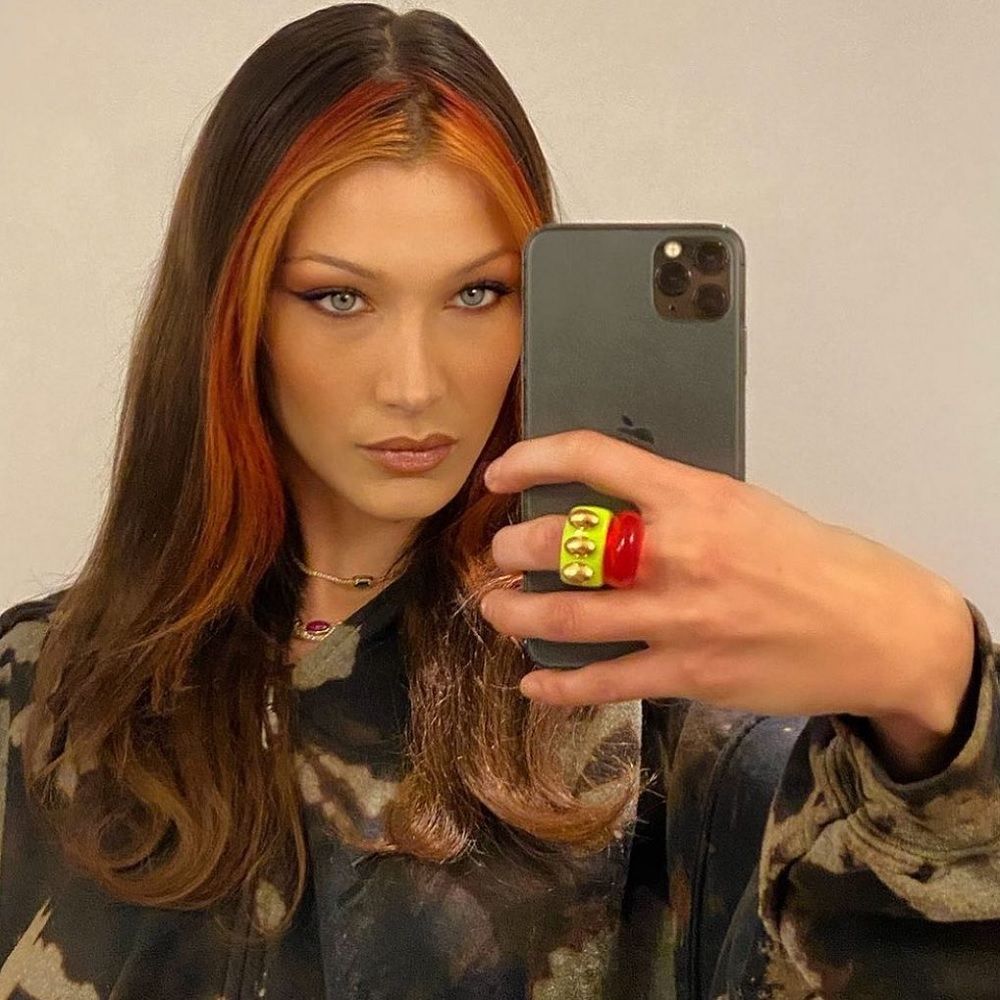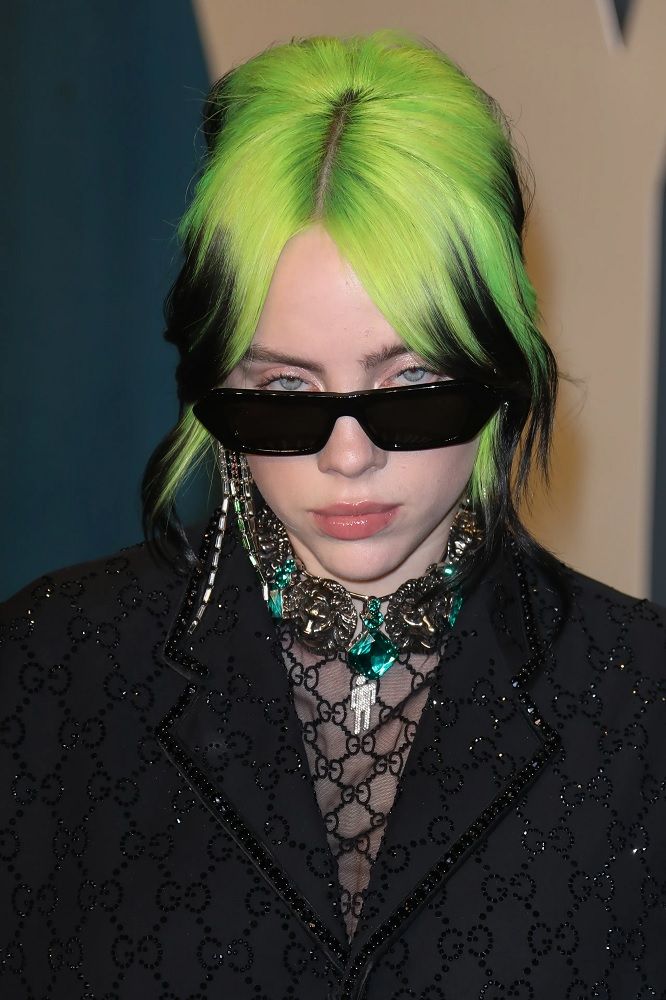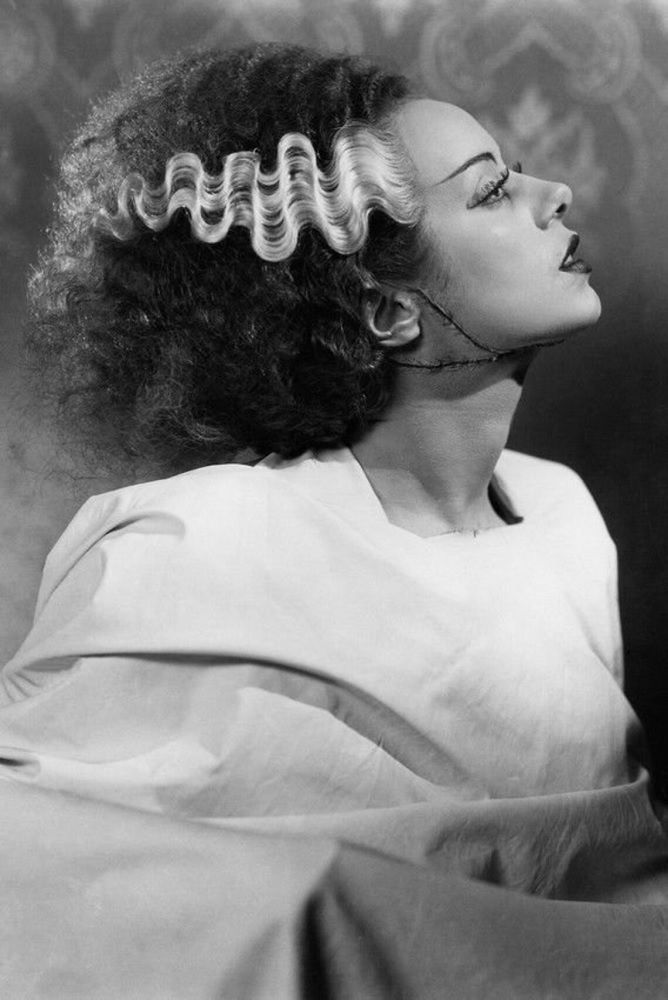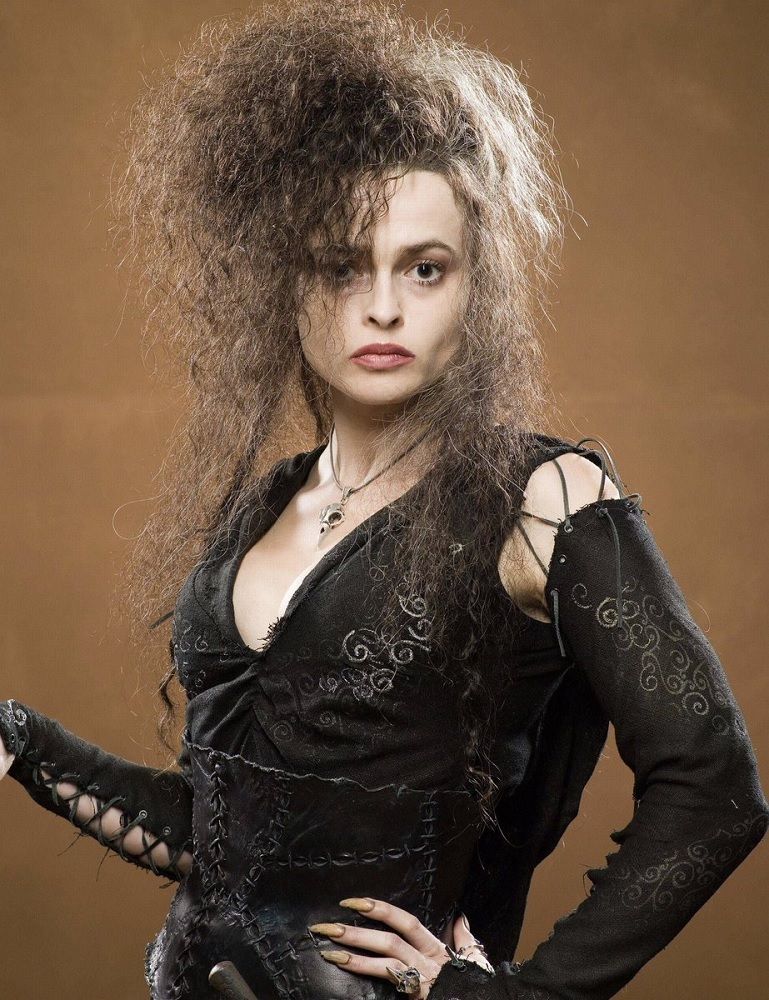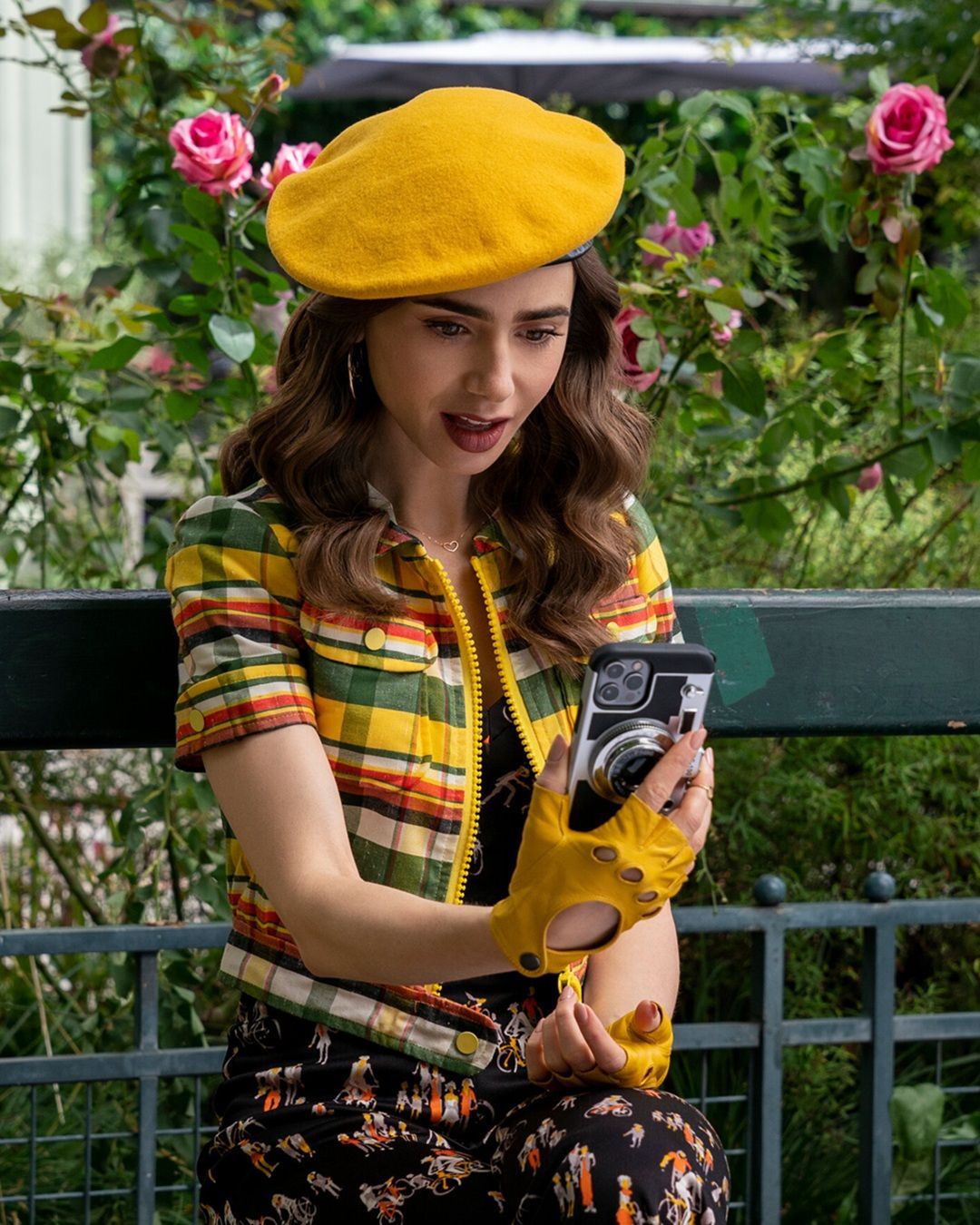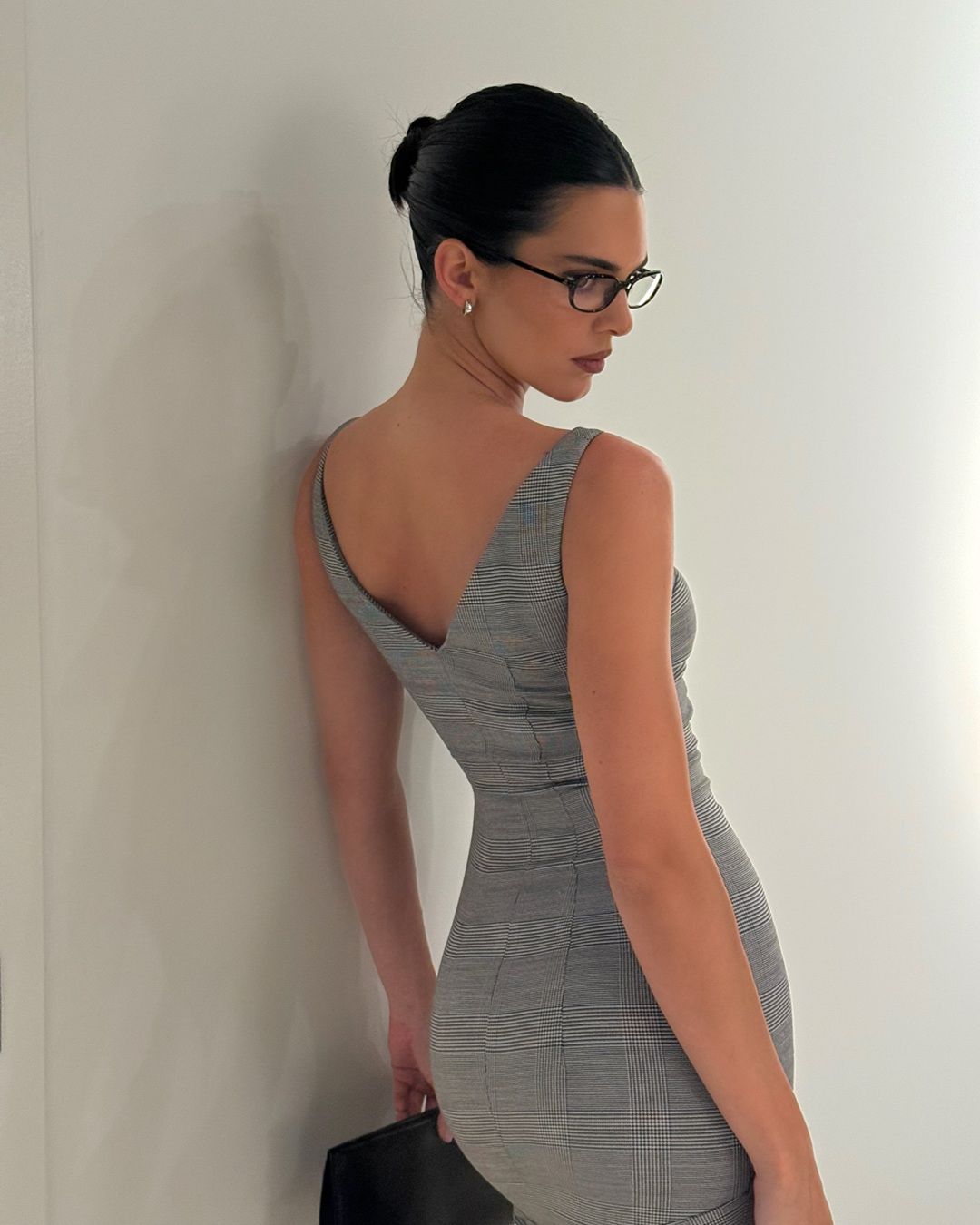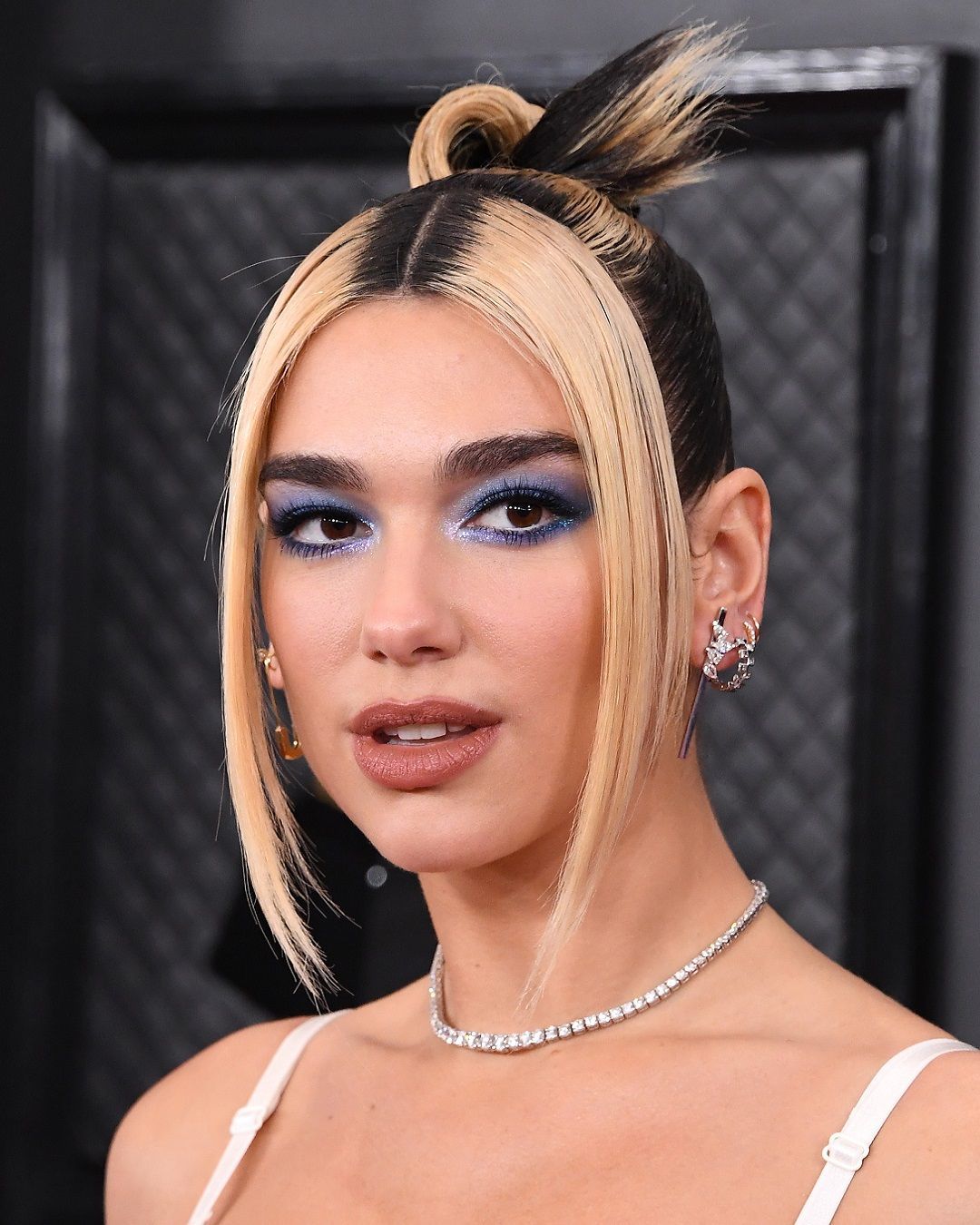
How the 90s strips became a symbol for female transgression A beauty statement shared by witches, alt girls and strong, independent women
Narcissa Malfoy, Rogue from X-Men, the Bride of Frankenstein and Dua Lipa. They are different women, some fictional, some real, who share charisma, charm and a beauty detail that conveys glamour, danger and deviance:a lightening of some strands in relation to the rest of the hair, almost always on the sides of the face, but not always. Some call them "chunky highlights" or "face framing", others, especially when the lighter part is in different parts of the hair, "skunk hair", but the 90s strands are all variations of the Mallen streak. This is where they originated.. Whether natural or artfully coloured, it's a strand of traditionally, but not always, white hair that sits at the hairline and can fade out into a single strip, a fringe or a half-half Cruella de Vil look. It is much more than a trend that recurs cyclically, it is a powerful symbol of defiance and transgression used by women (and others) as a gesture of rebellion against social and gender inequality. How did it come about?
The origins of the term "Mallen streak"
The term, originally derived from the Latin word "malignus" meaning malignant, has only been around since the 1970s. It was first coined by writer Catherine Cookson in her The Mallen Trilogy, a series of books describing the lives of a cursed family in which each member is accumulated by an unfortunate fate and a lock of white-coloured hair as a hereditary trait. As Cookson writes, "it was said that those who bore this feature seldom lived to old age, and that nothing good ever came of a mallen."
Natural trait or evil sign?
In a small percentage of people, the white-coloured strand of hair occurs naturally and may be a genetic trait that should not be confused with greying of the hair due to age. It is called poliosis and occurs when a grey or white strand of hair appears while the rest of the hair retains its natural colour. This localised greying of the hair can occur at birth or later and can spread to the hair, eyebrows and eyelashes. The cause? Low levels of melanin and melanocytes in the hair follicle. In some and rarer cases, it can be a symptom of more serious congenital disorders, such as Piebaldism or Waardenburg Syndrome. For centuries, those who had this aesthetic trait were discriminated against, even persecuted or felt guilty. In recent years, however, things have changed thanks to highlights, prized by alt and it girls, which have made depigmented locks or a different colour to the rest of the hair a trend. Now, however, it's "a fuck you to heteronormative beauty standards, especially those that confuse grey hair and difference with a lack of attractiveness."
From folklore to pop culture
The Mallen streak "is a fuck on heteronormative beauty standards, especially those that mistake white hair and difference for lack of attractiveness"," but it wasn't always so. In the Middle Ages, for example, when the Salem Trials were just an excuse to lynch any woman who wasn't obedient enough and anyone who was different, the "witch's streak"," as it was then called, was one of the telltale signs of witchcraft. This white tuft of hair, along with other natural features such as moles, birthmarks and third nipples, was considered an outward sign of an inward sin. Over time, this coding of the female body became so imprinted on our collective subconscious that it was also transferred to the universe of fantasy. It is no coincidence that some of pop culture's most famous female antagonists exhibit this aesthetic trait. Think about it: Cruella de Vil, Bellatrix Lestrange, Narcissa Malfoy, Lily Munster, Rogue from the X-Men, the Bride of Frankenstein. There is a long list of villains, charismatic, charming and shameless, who wear a silver stripe on the front of their heads that seems to emphasise their power, freedom and danger. in 1935, actress Elsa Lanchester, as the Bride of Frankenstein, wore a huge wig crossed with two grey "lightning bolts"," one on each side, indicating the dangerous electric current pulsing through her, reminiscent of the lightning bolts on her husband's neck. This look is similar to that of the vampire Lily Munster (played by Yvonne de Carlo) and is not far from the curls of the mutant Rogue, who can injure anyone who touches her with electric current. And what about Cruella de Vil? There's nothing more gloriously incorrect than a rich, fashionable, childless middle-aged woman who smokes incessantly, dominates her weak husband and skins puppies for fur coats. Although the character is actually inspired by actress Tallulah Bankhead, her last name, which includes the word "evil", alludes to Bram Stoker's novel Dracula, whose protagonist uses the pseudonym "Count De Ville".
From mediaeval villains to pop culture to the present day, the step is short. The phenomenon of mallen stripes first became popular in the 1950s as part of rockabilly culture, at a time when bleach kits were sold in local drugstores and "how-to" articles in women's magazines catapulted different-coloured topknots into the mainstream, probably as a seemingly frivolous and superficial way of standing up to domesticity and gender conformity. Over time, it became a means of reclaiming one's identity and resisting "everything the straight look tries to homogenise and asepticise" Whether a white-haired witch, a pop star with highlights like Geri Halliwell in the 1990s and Billie Eilish, or an e-girl from the internet - the Mallen Streak (in the coloured version) stands for alternative beauty that also loves and flaunts the darker sides of one's personality and rebels against stereotypes.
Feminism, alt-girl and contemporary trend
From mediaeval villains to pop culture to the present day, the step is short. The phenomenon of mallen stripes first became popular in the 1950s as part of rockabilly culture, at a time when bleach kits were sold in local drugstores and "how-to" articles in women's magazines catapulted different-coloured topknots into the mainstream, probably as a seemingly frivolous and superficial way of standing up to domesticity and gender conformity. Over time, it became a means of reclaiming one's identity and resisting "everything the straight look tries to homogenise and asepticise" Whether a white-haired witch, a pop star with highlights like Geri Halliwell in the 1990s and Billie Eilish, or an e-girl from the internet - the Mallen Streak (in the coloured version) stands for alternative beauty that also loves and flaunts the darker sides of one's personality and rebels against stereotypes.




















































